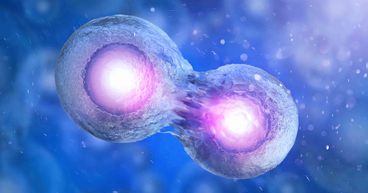
Researchers have long heralded the role of dietary fiber in regulating the immune system. Eating fiber-rich foods like fruits and vegetables promotes a healthy microbiome by introducing “good” bacteria into the gastrointestinal tract. Studies have found that gut health is vital for overall health—reducing inflammation and risk for developing diseases like diabetes and several types of cancer.
Yet until recently, people who’ve undergone a stem cell transplant for cancer, blood disorders or autoimmune diseases have been discouraged from eating a diet high in fiber for a little more than a week leading up to the transplant and for a month afterward. The reason: to reduce their exposure to harmful bacteria and symptoms like diarrhea and stomach pain.
But a new study shows a diet high in fiber may actually help people recovering from a stem cell transplant by protecting against one of its most common complications.
This article explores:
- High-fiber diets and stem cell transplants
- Fiber and the gut microbiome
- What are high-fiber foods?
- How much fiber should stem cell transplant patients consume?
- Customized nutrition plans for people with cancer
If you’ve been diagnosed with a blood cancer and would like to get a second opinion of your diagnosis or treatment options, call us or chat online with a member of our team.
High-fiber diets and stem cell transplants
Over the past several decades, stem cell transplants have become a useful weapon in the fight against certain diseases. They work by infusing blood-forming stem cells into the body to replace damaged bone marrow that’s not producing enough healthy blood cells. The stem cells are either taken from the patient’s own blood or from a donor’s blood. If stem cells are taken from a donor, it’s called an allogeneic stem cell transplant.
Sometimes during this type of stem cell transplant, donated stem cells trigger the body’s immune system to attack healthy cells, causing a potentially life-threatening condition known as graft-versus-host disease (GVHD).
Symptoms of GVHD may vary, depending on whether it is acute or chronic. Common symptoms of GVHD include:
- Skin issues, including rash, peeling, darkening or bumps
- Breathing issues, including dry, persistent cough, difficulty breathing or shortness of breath
- Liver issues, such as jaundice or tenderness in the abdomen
- Eye issues, including dry or red eyes, pain or blurry vision
People who have GVHD often experience digestive issues with symptoms similar to irritable bowel disease (IBD), including abdominal discomfort and diarrhea. To reduce those symptoms—and to minimize the exposure of their already-weakened immune systems to harmful bacteria—they typically follow diets that are low in fiber.
Yet emerging research suggests that’s not the right recommendation.
In a new study—led by Jenny Paredes, Ph.D., a staff scientist in the Marcel van den Brink Lab at City of Hope® and presented at the 2024 American Society of Hematology (ASH) annual meeting—researchers analyzed the diets of 173 patients undergoing a stem cell transplant, from 10 days before the procedure until 30 days after. They found that a high-fiber diet was associated with higher microbial diversity in the gut, a reduced risk of GVHD and improved overall survival.
The research team also found that patients who ate a lot of fiber had higher levels of microbes that produce butyrate, a short-chain fatty acid shown to have anti-inflammatory effects that protect against GVHD.
“Our study reaffirms data [on the benefits of dietary fiber] that have been captured outside the GVHD world, and we’re now demonstrating that those ‘rules’ also apply to GVHD,” Dr. Paredes tells The ASCO Post. “Significant decrease of fiber intake during transplantation is detrimental—it’s a lost opportunity to promote a healthy gut microbiome, recover from treatment-related microbiota injury, and protect against GVHD.”
While Dr. Paredes notes that high-fiber diets may not be appropriate for everyone, she points to the study’s “exciting potential for high fiber to play a role in reducing GVHD risk in transplant patients.”
The researchers believe patients would benefit by following a high-fiber diet for around 20 days after a transplant. They also suggest that by increasing the fiber intake by 20 grams during this time period, patients may improve their overall survival after two years.
Fiber and the gut microbiome
The microbiome refers to the trillions of bacteria inside the body. In the digestive system, these bacteria are usually divided into “good” bacteria, which help fight infection, and “bad” bacteria, which may help cause it.
Getting fiber from the foods you eat helps promote “good” bacteria in the gut microbiome and may positively impact your overall health.
While there’s no one-size-fits-all microbiome makeup—everyone’s optimal balance of bacteria varies based on factors like age, environment and genetics—there are recommendations for how much fiber you should get in your diet each day. According to the U.S. Food and Drug Administration (FDA), most adults should aim for a daily amount of around 28 grams.
What are high-fiber foods?
Following a high-fiber diet means eating foods rich in dietary fiber. Dietary fiber refers to the part of plant-based foods the body can’t digest. It’s often found in foods like vegetables and fruits, nuts and seeds, and whole grains.
High-fiber diets are linked to a reduced risk for developing certain types of cancer, including colorectal cancer. That’s why diets rich in fiber are often promoted for cancer prevention. Dietary fibers are also associated with heart health and lower cholesterol and blood sugar levels.
The American Cancer Society (ACS) lists foods that are high in fiber, including:
- All vegetables, raw or steamed, especially cruciferous vegetables, such as broccoli, cauliflower or Brussels sprouts and leafy green vegetables
- All fresh or dried fruits, especially apples, berries, prunes, raisins or dried cranberries
- Healthy snacks, such as popcorn, nuts and seeds
- Whole grains, including wheat germ, bran, rice and some granolas
- Beans, peas and lentils
- Corn, cornbread or cornmeal
- Pickles, olives and relish
- Potatoes with skin
How much fiber should stem cell transplant patients consume?
According to the study led by Dr. Paredes, relatively small dietary changes may make a big difference for stem cell transplant patients.
Increasing fiber intake by between 10 grams and 20 grams a day could potentially increase the microbiome diversity and abundance of butyrate producers, she says. That’s the equivalent of an avocado a day, a small salad or a small cup of vegetable soup.
Still, you should always talk to your doctor before making any changes to your diet before, during or after a stem cell transplant.
Customized nutrition plans for people with cancer
Tailoring nutrition sources in the diet to individual health needs is an integral component of cancer care.
Carolyn Lammersfeld, MBA, MS, RD, CSO, LD, Vice President of Integrative Care Services at City of Hope Cancer Centers Atlanta, Chicago and Phoenix, says a diet is a lifestyle choice for many people, but for those with cancer, it’s also sometimes a medical necessity.
When increasing fiber in your diet, it is important to do it gradually and also drink plenty of water to avoid digestive discomfort like bloating or gas. As previously mentioned, try adding one new high fiber food a day. A registered dietitian can help you with additional tips for meeting your fiber needs.
There are times when an adjustment in total fiber intake or the type of fiber consumed may be indicated during or after a transplant, but your doctor or dietitian can help you make those modifications as well.
If you have cancer, talk to your doctor about whether you should change your diet. He or she will advise you on what’s best for your nutritional needs based on your specific type of disease, planned treatments and personal preferences.
If you’ve been diagnosed with a blood cancer and would like to get a second opinion of your diagnosis or treatment options, call us or chat online with a member of our team.



